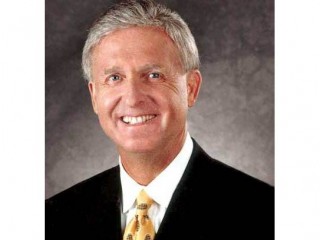
Robert L. Tillman biography
Date of birth : -
Date of death : -
Birthplace : U.S.A
Nationality : American
Category : Famous Figures
Last modified : 2011-09-27
Credited as : businessman, Lowe's Companies Inc., retailer
0 votes so far
In an era when management-level personnel move from company to company at the drop of a hat, Tillman has spent his entire career with Lowe's, first joining the company as an entry-level employee in 1962. He first attracted attention from Lowe's corporate managers as the successful manager of one of the chain's outlets in Wilmington, North Carolina. Founded in 1946-more than three decades before Home Depot, which got its start in 1979-Lowe's opened its first hardware store in North Wilkesboro, North Carolina. Although it soon expanded into nearby states, for the first few decades of its existence the company focused its marketing mix on hardware, appliances, and building materials to cater to the post-war building boom. Building contractors made up the bulk of Lowe's customer base.
In 1980 Lowe's introduced its new RSVP (Retail Sales Volume and Profit) strategy, at the heart of which was a concerted effort to broaden the company's revenue base beyond building contractors to include the burgeoning do-it-yourself market. Tillman at that time was the charismatic manager of the chain's Wilmington store, one of its most successful RSVP operations. For his part, Tillman used his clout as one of the chain's star store managers to urge Lowe's management to think even bigger, building still larger stories that would offer consumers one-stop shopping for all their home improvement needs.
Later in the 1980s Tillman was plucked from the ranks of store managers and fast-tracked into corporate management, serving in a variety of marketing and merchandising positions, including senior vice president of merchandising and marketing and executive vice president of merchandising. He subsequently was named vice president and chief operating officer, in which positions he continued until 1996, when he was elected president and chief executive officer (CEO). Tillman had been tapped to join the Lowe's board of directors in 1994, and in 1998 he was given the additional responsibility of corporate chairman. After becoming CEO in the late 1990s, Tillman quickly set to work to turn his vision of a nationwide chair of super-stores into reality.
By mid-2003, Lowe's, which for decades had been seen largely as a regional hardware store operator, confined mostly to the Southeast, had spread into 45 states. Most of its growth west of the Mississippi came under Tillman's leadership, as did the company's most impressive increases in revenue and earnings. Lowe's expansion into the western United States began the year after Tillman took over as CEO when the company committed more than $1.5 billion to the creation of 100 new stores in the West. First targeted were such prime markets in Arizona, California, and Nevada as Phoenix, Tucson, Los Angeles, San Diego, and Las Vegas. Of Lowe's rationale for the westward expansion, Tillman told PR Newswire, "Heading west means introducing Lowe's to one of the home improvement industry's strongest growth regions. Moving now allows Lowe's to establish a beachhead on the West Coast, enabling our company to continue growing into new markets throughout the United States."
Lowe's move into the West was given a major boost in November of 1998 when the North Carolina-based company announced its acquisition of Eagle Hardware, a chain of 32 warehouse-scale home improvement stores confined to nine states of the western United States. In an interview with AP Online, Tillman said, "This merger allows Lowe's to accelerate our West Coast expansion program and gives us an immediate presence in a number of key metropolitan markets in the West." The takeover of Eagle, acquired in a $1 billion stock swap, also marked a change in strategy for Lowe's, which previously had not used acquisition to grow its network of retail outlets. Talking to Deborah Marchini of CNNfn's Business Day, Tillman explained that the acquisition made sense because Lowe's had no overlap with Eagle, which was based in the Pacific Northwest. "The timing was correct for Eagle and also for Lowe's to make the acquisition. It embellishes our western expansion. "
According to BusinessWeek, which in January of 2003 named Tillman one of corporate America's best managers, part of Lowe's recent success can be attributed to its CEO's realization that women play a key role in home improvement projects. Acting on research that showed women initiate 80 percent of home projects, Tillman moved aggressively to give Lowe's outlets greater appeal to female customers. Stores were brightened up and store offerings adjusted to include more appliances, high-end bathroom fixtures, and Laura Ashley paints.
Although Lowe's profit jumped by nearly 22 percent in the first quarter of fiscal 2003 (which ended April 30, 2003), same-store sales showed almost no increase at all, a disappointing performance attributed largely to bad weather. Total sales for the quarter were $7.2 billion, up eleven percent from the previous year, but almost all of that increase came from new stores that were not in operation a year earlier. Tillman, however, was upbeat in his assessment of the longer-term future, telling Paul Nowell of AP Online, "We remain confident that home improvement consumers will continue to invest in their homes. There are many positive signs and the housing market is strong as mortgage rates remain at 40-year lows."
On April 5, 2004, Lowe's Co. Inc. announced that Tillman would retire as chief executive officer and chairman on January 28, 2005. He was scheduled to be replaced by current Lowe's president, Robert Niblock.
















